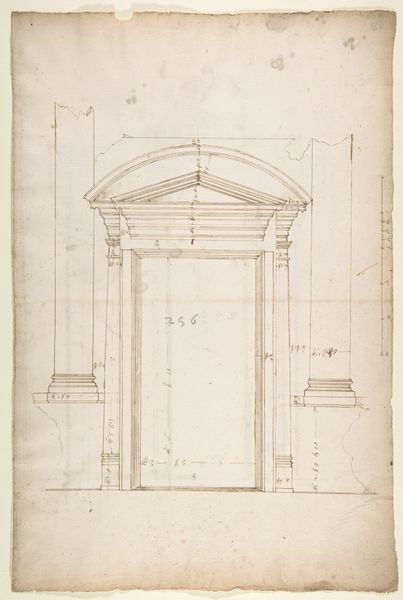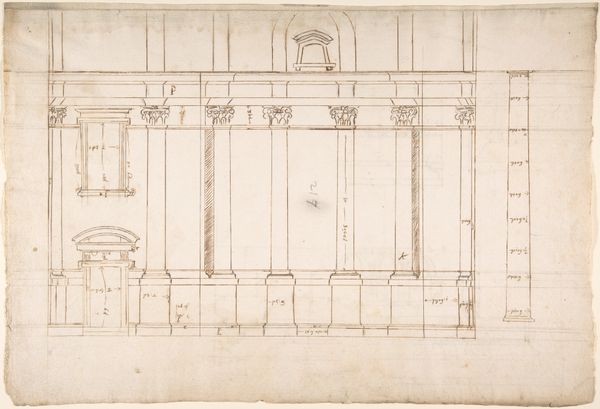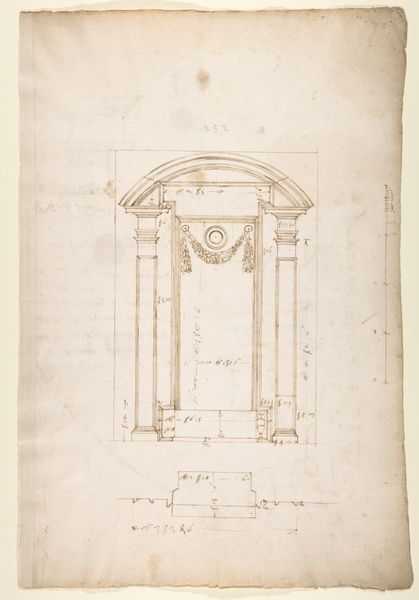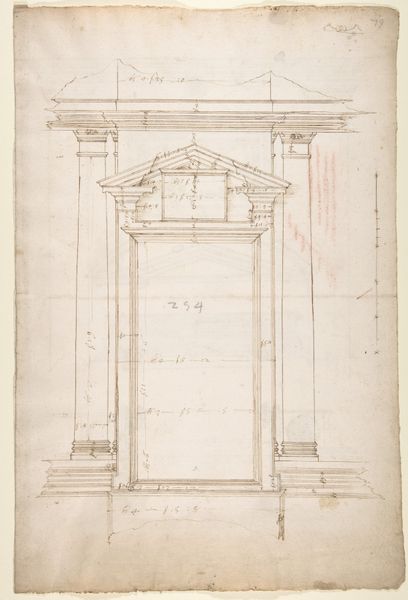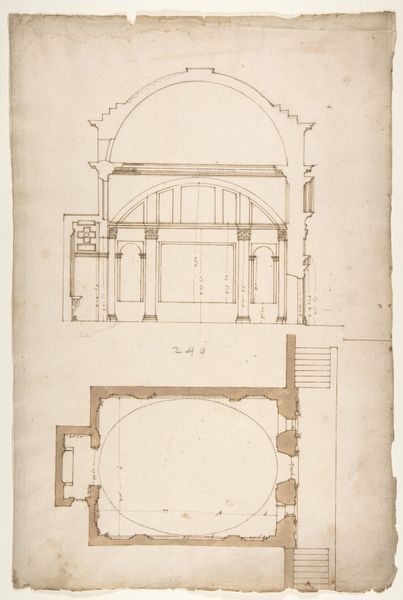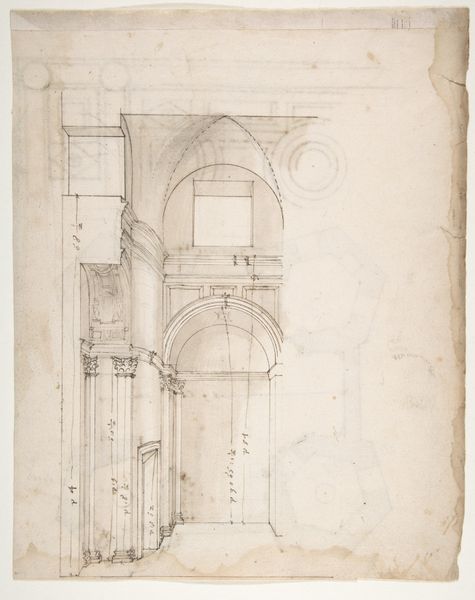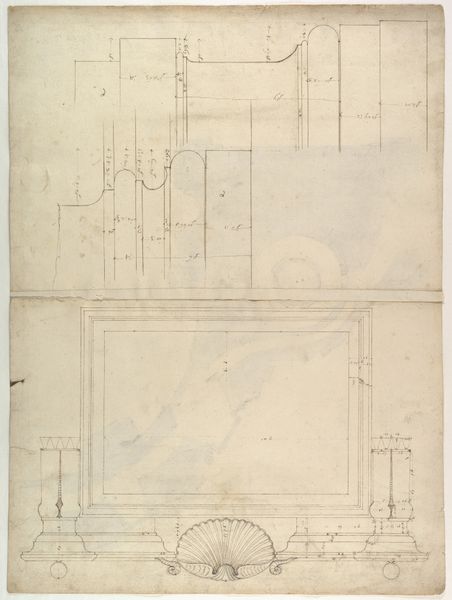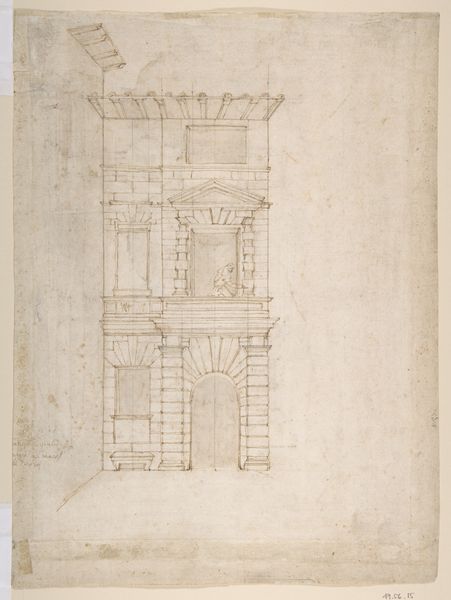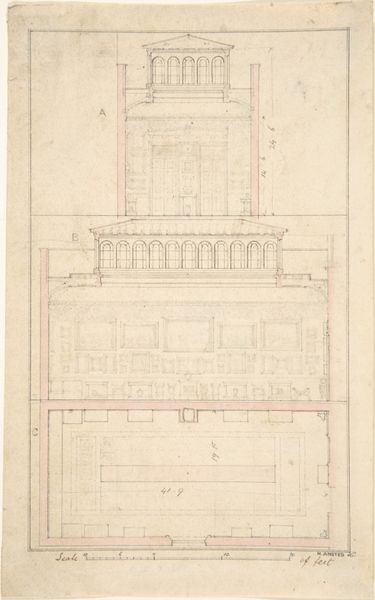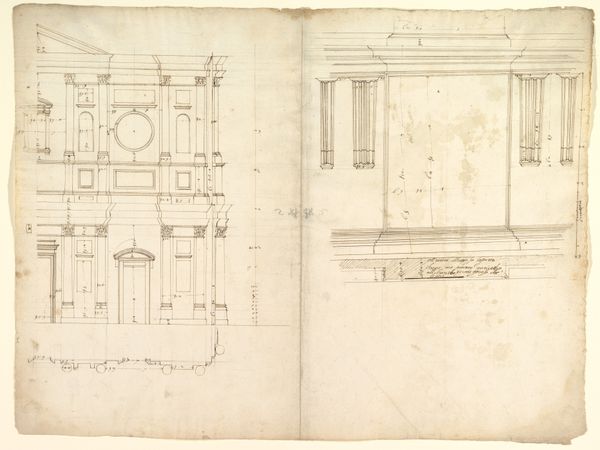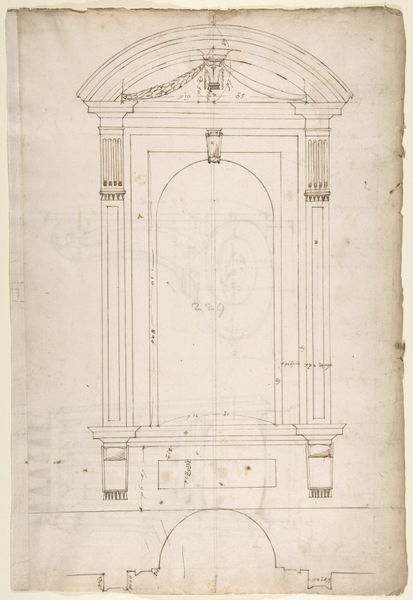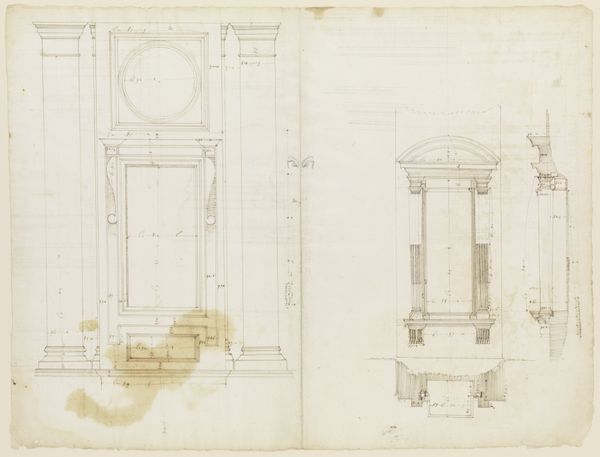
San Lorenzo, Library, portal, section (recto) San Lorenzo, Library, Ricetto, portal, elevation (verso) 1500 - 1560
0:00
0:00
drawing, print, paper, pencil, architecture
#
drawing
# print
#
paper
#
form
#
11_renaissance
#
pencil
#
line
#
history-painting
#
architecture
Dimensions: sheet: 16 15/16 x 11 7/16 in. (43 x 29 cm)
Copyright: Public Domain
Curator: Here we have "San Lorenzo, Library, portal, section (recto) San Lorenzo, Library, Ricetto, portal, elevation (verso)," created between 1500 and 1560. This drawing, employing pencil on paper, captures a fascinating architectural design. What are your initial thoughts? Editor: Immediately, I notice the precision. Look at the linework! It speaks of careful planning and construction. I'm struck by how this object—a drawing, itself a product—hints at a monumental built environment and all that it enables. Curator: Precisely! The drawing offers an insight into the means of production. Considering this work resides in the Metropolitan Museum of Art, its presence speaks to the institutional framing of architectural designs as historical and cultural artifacts. Think about how galleries elevate these drawings. Editor: Absolutely. The very existence of this drawing, presumably intended as a guide for the construction team, displayed in a museum shifts its meaning. From functional tool to a work demanding aesthetic and intellectual consideration. But let's not forget that it is pencil on paper. What do we make of the materiality? Curator: Well, the choice of pencil, its ready availability and ease of correction, emphasizes the pragmatic, functional role of drawings. Yet, this apparent simplicity belies the complex processes of architectural design and the collaborative labor needed. Who created the drawing and what other materials were used throughout the larger building processes? These all contribute to understanding consumption and historical context. Editor: That's interesting. How might this drawing have influenced subsequent architectural endeavors or the public perception of libraries as institutions of knowledge? San Lorenzo had such immense cultural and social capital at the time of conception. Curator: Indeed. Libraries weren't just repositories of books; they were statements of power and learning. This drawing provides a direct link to understanding that intention. Editor: It shows the politics of imagery, absolutely. Before photography, drawings such as these were primary ways architectural ideas circulated and shaped the visual landscape, setting material standards and architectural convention for future societies. It’s remarkable how much historical weight can be carried in the lines of a drawing. Curator: Seeing this architectural draft through the lens of its social context and production deepens its impact, revealing layers of cultural and political intent that shaped not only a building but the world around it. Editor: Ultimately, analyzing it as an artifact—reveals more than its form; we gain understanding of social power, intention, the nature of progress, the historical ripple effects, and an evolution of value, shifting from construction tool to cultural treasure.
Comments
No comments
Be the first to comment and join the conversation on the ultimate creative platform.
